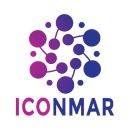Speaker
Description
In this study, a graphitic activated carbon was synthesized using lignocellulosic residue (LCMs)-based on dried Durio zibethinus (Durian leaves-DL) It was used to produce activated carbon (DLAC) using one step physical activation under nitrogen (N2) flow. The synthesized graphitic carbon of DLAC was characterized using a variety of techniques, including field emission scanning electron microscopy (FESEM), BET surface area analysis, thermogravimetric analysis (TGA), ultimate (CHNOS) analysis, iodin number and bulk density. The adsorbent was designed to adsorb the cationic dye Crystal Violet (CV) Box-Behnken Design (BBD) based on Response Surface Methodology (RSM) was used to investigate the effects of five input variables—concentration (A), time (B), pH (C), adsorbent dosage (D) and agitation speed (E)—on CV removal efficiency using DLAC for its’ better performance. Removal percentages (%R) of CV was taken as output variable. Quadratic model was suggested for CV removal (%R) using DLAC sample. Analysis of Variance (ANOVA) was carried out to observe the effect of each input variables, their interactions, and quadratic terms. The results revealed the optimal conditions for achieving the highest removal percentage, which were influenced by the physicochemical properties of the starting materials as well as adsorption process variables. Significant improvements were observed in the surface area and pore size distribution of DLAC carbon which were efficient enough to take Crystal Violet dye (CV) in presence of Malachite Green (MG) dye in binary solute system. The competitive sorption system was analyzed in terms of Langmuir Isotherm whereby comparative evaluation of Langmuir maximum monolayer adsorption properties were compared for both the dyes (CV and MG) The results obtained here indicating the promising potential of this biomass (DL)-based graphitic carbon as an effective adsorbent for CV in single and binary solute system of wastewater.
Keyword: Single Solute System, Binary Solute System, Adsorption, Box-Behnken Design (BBD), Response Surface Methodology (RSM)

